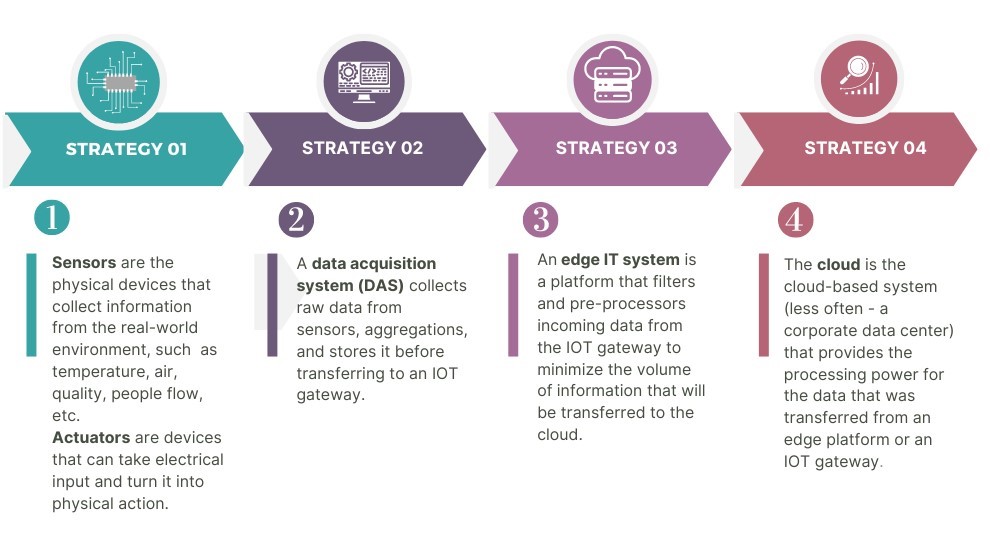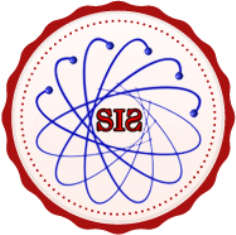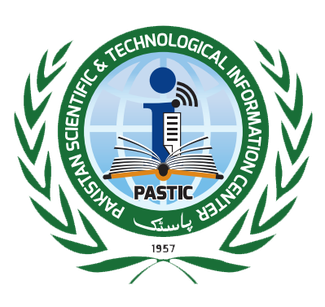The Emergence of the Internet of Things in Military Defense: A Comprehensive Review
Keywords:
Internet of Things (IoT), Military Defense, IoT Security, Battlespace AwarenessAbstract
The Internet of Things (IoT) has emerged as a significant research field. The main concept of IoT technology is to connect millions of devices and facilitate interaction between these devices and the cloud. Recently this concept has been considered and applied in the design of systems intended for distributing data and information between heterogeneous devices. The goal is to enhance the performance of the business and decision-making process. IoT enables energy and supply chain monitoring, production coordination, equipment performance optimization, transportation, and public health, to improve, and enhance worker safety. It is revolutionizing military operations enhancing battlespace awareness operational efficiency, and command structures while enabling more intelligent and responsive security systems across diverse defense sectors and mission domains. This paper discusses how IoT technology shapes the future of military information and defense systems. The goal of this article is to present a comprehensive literature review on the application of IoT in military defense. This review also puts future recommendations for the further development of IoT technology in the defense sector.
References
A. Y., Tertyshnik., O., Potapov., A., Mishok., A., “Analysis of the possibilities of using iot for military purposes,” Zbìrnik Nauk. Pr. Deržavnogo Nauk. ìnstitutu viprobuvanʹ ì sertifìkacìï ozbroênnâ ta vìjsʹkovoï Teh., 2024.
D. E. Zheng and W. A. Carter, “Leveraging the Internet of Things for a More Efficient and Effective Military,” Rowman Littlef., 2015.
S. P. John Zhu, Egan McClave, Quan Pham and and A. T. Sam Reinhart, Ryan Sheatsley, “A Vision toward an Internet of Battlefield Things (IoBT): Autonomous Classifying Sensor Network,” US Army Res. Lab., pp. 1–30, [Online]. Available: https://apps.dtic.mil/sti/pdfs/AD1064107.pdf
L. A. | J. Alotaibi, “Insight into IoT Applications and Common Practice Challenges,” Int. J. Trend Sci. Res. Dev., vol. 4, no. 3, pp. 42–49, 2020, [Online]. Available: https://www.ijtsrd.com/papers/ijtsrd30286.pdf
N. M. and P. H. Y. Zhang, “Outlier Detection Techniques for Wireless Sensor Networks,” A Surv. IEEE Commun. Surv. Tutorials, vol. 12, no. 2, pp. 159–170, 2010, doi: doi: 10.1109/SURV.2010.021510.00088.
S. T. Somayya Madakam, R. Ramaswamy, “Internet of Things (IoT): A Literature Review,” J. Comput. Commun., vol. 3, no. 5, p. 10, 2015, doi: 10.4236/jcc.2015.35021.
and T. A. Lampropoulos, Georgios, Kerstin Siakas, “INTERNET OF THINGS IN THE CONTEXT OF INDUSTRY 4.0: AN OVERVIEW,” Int. J. Entrep. Knowl., vol. 7, no. 1, 2019, doi: https://doi.org/10.37335/ijek.v7i1.84.
D. S. Ghani, M. A. N. U., She, K., Rauf, M. A., Khan, S., Khan, J. A., Aldakheel, E. A., & Khafaga, “Enhancing Security and Privacy in Distributed Face Recognition Systems through Blockchain and GAN Technologies,” Comput. Mater. Contin., vol. 79, no. 2, 2024, doi: https://doi.org/10.32604/cmc.2024.049611.
E. Munir, Arslan; Aved, Alexander; Blasch, “Situational Awareness: Techniques, Challenges, and Prospects,” Acad. J., vol. 3, no. 1, p. 55, 2022.
Z. M. P. A. Ghani, Naveed, Sajak, Aznida Abu Bakar, Qureshi, Rehan, Zuhairi, Megat Farez Azril and Baidowi, “A Review of Fog Computing: Concept, Architecture, Application, Parameters, and Challenges,” Int. J. Informatics Vis., vol. 8, no. 2, pp. 564–575, 2024, doi: https://doi.org/10.62527/joiv.8.2.2187.
M. J. Nichols, R. K., Mumm, H., Lonstein, W. D., Ryan, J. J., Carter, C. M., Hood, J. P., ... & Jackson, “Unmanned vehicle systems & operations on air, sea, land,” New Prairie Press, 2020, [Online]. Available: https://newprairiepress.org/ebooks/35/
V. N. and T. N. Lachlan J. Gunn, N. Asokan, Jan-Erik Ekberg, Hans Liljestrand, “Hardware platform security for mobile devices,” Found. Trends® Priv. Secur., vol. 3, no. 3–4, pp. 214–394, 2022, doi: http://dx.doi.org/10.1561/3300000024.
A. A. Muhammad Ahmad Nawaz Ul Ghani, Kun She, Muhammad Arslan Rauf, Masoud Alajmi, Yazeed Yasin Ghadi, “Securing synthetic faces: : A GAN-blockchain approach to privacy-enhanced facial recognition,” J. King Saud Univ. - Comput. Inf. Sci., vol. 36, no. 4, 2024, doi: https://doi.org/10.1016/j.jksuci.2024.102036.
A. J. N.C.Winget, A.R.Sadeghi, “Invited - Can IoT be secured: emerging challenges in connecting the unconnected,” 53rd Annu. Des. Autom. Conf., 2016, doi: 10.1145/2897937.2905004.
J. et al Roberts, H., Cowls, J., Morley, “The Chinese Approach to Artificial Intelligence: an Analysis of Policy, Ethics, and Regulation,” AI Soc, vol. 36, pp. 59–77, 2021, doi: https://doi.org/10.1007/s00146-020-00992-2.
J. J. Kang, “A Military Mobile Network Design: mHealth, IoT and Low Power Wide Area Networks,” Int. Telecommun. Networks Appl. Conf., pp. 1–3, 2020, doi: 10.1109/ITNAC50341.2020.9315168.
R. B. S. N. Srirama, “Internet of Things (IoT) and New Computing Paradigms,” Fog Edge Comput. Princ. Paradig., pp. 1–23, 2019, doi: 10.1002/9781119525080.ch1.
B. P., Prakruthi Yashawanth, K D., Chethan Kumar, “Defense communication system AWS,” Appl. Comput. Eng., vol. 2, no. 1, pp. 775–779, 2023, doi: 10.54254/2755-2721/2/20220678.
F. O. Tim Sweijs, Saskia van Genugten, “Defence Planning for Small and Middle Powers: Rethinking Force Development in an Age of Disruption,” Polit. Int. Relations, p. 302, 2024, doi: https://doi.org/10.4324/9781003398158.
D. A. and M. King, “The impact of artificial intelligence on military defence and security,” CIGI Pap., p. 19, 2022, [Online]. Available: https://www.cigionline.org/static/documents/no.263.pdf
M. Noura, M. Atiquzzaman, and M. Gaedke, “Interoperability in Internet of Things: Taxonomies and Open Challenges,” Mob. Networks Appl., vol. 24, no. 3, pp. 796–809, Jun. 2019, doi: 10.1007/S11036-018-1089-9.
V. S. S. and G. B. Marković, “Internet of Things in military applications,” Vojnoteh. Glas., vol. 71, no. 4, pp. 1148–1171, 2023, doi: 10.5937/vojtehg71-46785.
and Y. G. K. J. Koo, S. R. Oh, S. H. Lee, “Security Architecture for Cloud-Based Command and Control System in IoT Environment,” Appl. Sci., vol. 10, no. 3, p. 1035, 2020, doi: https://doi.org/10.3390/app10031035.
A. S. A. and C. S. S. Kumari, P. Shiny Sherlee, “Wearable Brain Computer Interfaces (BCI) in Fog Computing using Wireless Technology,” Int. Conf. Intell. Comput. Control Syst., pp. 753–758, 2023, doi: 10.1109/ICICCS56967.2023.10142719.
and A. S. S. Tedeschi, D. Rodrigues, C. Emmanouilidis, J. Erkoyuncu, R. Roy, “A cost estimation approach for IoT modular architectures implementation in legacy systems,” Procedia Manuf., vol. 19, pp. 103–110, 2018, doi: https://doi.org/10.1016/j.promfg.2018.01.015.
N. A. and A. Saxena, “Artificial intelligence equipped edge internet of things (iot) devices in security,” Adv. IoT Technol. Appl. Ind. 4.0 Digit. Econ., p. 296, 2024, [Online]. Available: https://www.taylorfrancis.com/chapters/edit/10.1201/9781003434269-16/artificial-intelligence-ai-equipped-edge-internet-things-iot-devices-security-nikita-agrawal-aakansha-saxena?context=ubx&refId=8d6ab8a7-cf3f-4023-a465-ae0716877da6
T. Ricky, Rajora., Aarju, Rajora., Bhanu, Sharma., Priyanshi, Aggarwal., Siddhant, “The Impact of the IoT on Military Operations: A Study of Challenges, Applications, and Future Prospects,” 4th Int. Conf. Innov. Pract. Technol. Manag., pp. 1–5, 2024, doi: doi: 10.1109/iciptm59628.2024.10563671.
and G. T. Margariti, Spiridoula V., Vassilios V. Dimakopoulos, “Modeling and Simulation Tools for Fog Computing—A Comprehensive Survey from a Cost Perspective,” Futur. Internet, vol. 12, no. 5, p. 89, 2020, doi: https://doi.org/10.3390/fi12050089.
Z. A. & S. H. Sarra Hammoudi, “Challenges and research directions for Internet of Things,” Telecommun. Syst., vol. 67, pp. 367–385, 2018, doi: https://doi.org/10.1007/s11235-017-0343-y.
A. A. A. Abohamra Najat, SabriyaAlghennaiSalheen, “Case Study of Cloud Computing Security Issues and confidentiality Challenges,” Int. J. Emerg. Trends Eng. Res., vol. 10, no. 4, pp. 200–209, 2022, [Online]. Available: https://www.warse.org/IJETER/static/pdf/file/ijeter051042022.pdf
Z. W. Zheng W, Yang Y, Liu C, “Recent advancements in sensor technologies for healthcare and biomedical applications,” Sensors (Basel), vol. 23, no. 6, p. 3218, 2023, doi: 10.3390/s23063218.
and R. R. Z. Mohammed Sadeeq, Mohammed, Nasiba M. Abdulkareem, Subhi R. M. Zeebaree, Dindar Mikaeel Ahmed, Ahmed Saifullah Sami, “IoT and Cloud Computing Issues, Challenges and Opportunities: A Review,” Qubahan Acad. J., vol. 1, no. 2, pp. 1–7, 2021, doi: https://doi.org/10.48161/qaj.v1n2a36.
W. R. Ash Carter, “Department of defense announces successful micro-drone demonstration,” US Dep. Def., 2017, [Online]. Available: https://www.defense.gov/News/Releases/Release/Article/1044811/department-of-defense-announces-successful-micro-drone-demonstration/
and B. K. E. W. Yan, A. Fu, Y. Mu, X. Zhe, S. Yu, “Efficient Attestation Resilient to Physical Attacks for IoT Devices,” Proc. 2nd Int. ACM Work. Secur. Priv. Internet-of-Things, pp. 2–7, 2019, doi: 10.1145/3338507.3358614.
M. S. S. Tan, Weng Chun, “Review of RFID and IoT integration in supply chain management,” Oper. Res. Perspect., vol. 9, 2022, doi: https://doi.org/10.1016/j.orp.2022.100229.
A. Riahi Sfar, E. Natalizio, Y. Challal, and Z. Chtourou, “A roadmap for security challenges in the Internet of Things,” Digit. Commun. Networks, vol. 4, no. 2, pp. 118–137, Apr. 2018, doi: 10.1016/J.DCAN.2017.04.003.
and H. K. A. M. A. N. U. Ghani, K. She, M. A. Rauf, S. Khan, M. Alajmi, Y. Y. Ghadi, “Toward robust and privacy-enhanced facial recognition: A decentralized blockchain-based approach with GANs and deep learning,” Math. Biosci. Eng., vol. 21, no. 3, pp. 4165–4186, 2024, doi: 10.3934/mbe.2024184.
Y. Tadjdeh, “Industry Ruggedizing, Securing Battlefield Radios,” Natl. Def., vol. 102, no. 771, p. 37, 2018, [Online]. Available: https://www.nationaldefensemagazine.org/articles/2018/2/5/industry-ruggedizing-securing-battlefield-radios
J. Danaher, “Robot Betrayal: a guide to the ethics of robotic deception,” Ethics Inf Technol, vol. 22, pp. 117–128, 2020, doi: https://doi.org/10.1007/s10676-019-09520-3.
I. Yaqoob, “Internet of Things Architecture: Recent Advances, Taxonomy, Requirements, and Open Challenges,” IEEE Wirel. Commun., vol. 24, no. 3, pp. 10–16, 2017, doi: 10.1109/MWC.2017.1600421.
P. O. and I. K. V. Tyurin, O. Martyniuk, V. Mirnenko, “General Approach to Counter Unmanned Aerial Vehicles,” IEEE 5th Int. Conf. Actual Probl. Unmanned Aer. Veh. Dev., pp. 75–78, 2019, doi: 10.1109/APUAVD47061.2019.8943859.
M. B. and G. Cuzzelli, “War in the 21st Century: Reflections on Conflicts in the Contemporary World,” From Clausewitz to Putin, 2024, [Online]. Available: https://library.oapen.org/handle/20.500.12657/90124
S. S. Buchanan, “CYBER-ATTACKS TO INDUSTRIAL CONTROL SYSTEMS SINCE STUXNET: A SYSTEMATIC REVIEW,” Capitol Technol. Univ., pp. 1–126, 2022, [Online]. Available: https://www.proquest.com/openview/4be679a2dcfa686903463391d5dde19b/1?pq-origsite=gscholar&cbl=18750&diss=y
R. R. and L. Vyakaranam, “Iot-enabled smart military training for virtual simulation and realtime performance analysis,” Int. Conf. Adv. Data Eng. Intell. Comput. Syst., pp. 1–6, 2024, [Online]. Available: https://www.semanticscholar.org/paper/IoT-Enabled-Smart-Military-Training-for-Virtual-and-Raman-Vyakaranam/b62ff3aa75e80e1cda414f75aa923e1090ddc8c2
N. S. and S. B. S. P. Sakthi, T. Vishnuram, “Iot-based realtime system for tracking and monitoring the health of soldier,” Second Int. Conf. Electron. Renew. Syst., pp. 531–536, 2023, doi: 10.1109/ICEARS56392.2023.10085150.
D. E. Sanger, “Stuxnet worm was perfect for sabotaging centrifuges,” The Hindu, 2010, [Online]. Available: https://www.nytimes.com/2010/11/19/world/middleeast/19stuxnet.html
N. S. and M. B. M. Tortonesi, J. Michaelis, “Software-defined and value-based information processing and dissemination in IoT applications,” IEEE/IFIP Netw. Oper. Manag. Symp. Istanbul, Turkey, pp. 789–793, 2016, doi: 10.1109/NOMS.2016.7502900.
S. Sharma, A., Aggarwal, “Real-Time Health Monitoring System of Soldiers Using IoT,” Adv. Comput. Paradig. Hybrid Intell. Comput., vol. 1373, pp. 285–296, 2022, doi: https://doi.org/10.1007/978-981-16-4369-9_29.
M. et al Velasquez, K., Abreu, D.P., Curado, “Service placement for latency reduction in the internet of things,” Ann. Telecommun, vol. 72, pp. 105–115, 2017, doi: https://doi.org/10.1007/s12243-016-0524-9.
G. S. H. and R. H. Goudar, . “Iot: Issues, challenges, tools, security, solutions and best practices,” Int. J. Pure Appl. Math., vol. 120, no. 6, pp. 12099–12109, 2018, [Online]. Available: https://acadpubl.eu/hub/2018-120-6/8/805.pdf
N. B. G. et Al, “Hardware Design and Implementation of Multiagent MLP Regression for the Estimation of Gunshot Direction on IoBT Edge Gateway,” IEEE Sens. J., vol. 23, no. 13, pp. 14549–14557, 2023, doi: doi: 10.1109/JSEN.2023.3278748.
N. Payal, M., Dixit, P., Sairam, T. V. M., & Goyal, “Robotics, AI, and the IoT in defense systems,” AI IoT‐Based Intell. Autom. Robot., pp. 109–128, 2021, doi: 10.1002/9781119711230.ch3.
D. V. Roshanak Rose Nilchiani and P. S. Antón, “Joint All-Domain Command and Control (JADC2) Opportunities on the Horizon,” Acquis. Res. Program., 2023, [Online]. Available: https://www.dair.nps.edu/handle/123456789/4851
D. Wójtowicz, T., & Król, “MULTI-DOMAIN BATTLE. NEW DOCTRINE OF THE UNITED STATES ARMED FORCES,” Zesz. Nauk. Akad. Szt. Wojennej, vol. 3, no. 112, pp. 64–78, 2018, doi: 10.5604/01.3001.0013.0879.
H. L. Greenley, “Department of Defense Energy Management: Background and Issues for Congress,” Congr. Res. Serv., pp. 1–23, 2019, [Online]. Available: https://sgp.fas.org/crs/natsec/R45832.pdf
N. Persaud, “prediction: Securing iotconnected devices will be a major cybersecurity challenge,” CSO, 2017.
A. Filipović, “Lethal Autonomous Weapon Systems (LAWS): Towards global regulation or indiscriminate employment?,” Polit. Rev., vol. 75, pp. 211–232, 2023, doi: 10.5937/polrev75-43187.
and T. A. P. Y. Gunawan, M. H. Aulawi, R. Anggriawan, “Command responsibility of autonomous weapons under international humanitarian law,” Cogent Soc. Sci., vol. 8, no. 1, 2022, doi: 10.1080/23311886.2022.2139906.
E. E. N. and O. E. Osuagwu, “A Model for Predicting Migration from IPV4 to IPV6 by 2027 in Nigeria,” Open J. Model. Simul., vol. 6, no. 3, 2018, doi: 10.4236/ojmsi.2018.63004.
and A. S. A. R. Hassan, F. Qamar, M. K. Hasan, A. H. Mohd Aman, “Internet of Things and its applications: A comprehensive survey,” Symmetry (Basel)., vol. 12, no. 10, p. 1674, 2020, [Online]. Available: https://www.semanticscholar.org/paper/Internet-of-Things-and-Its-Applications%3A-A-Survey-Hassan-Qamar/733c10f43ea155d21e89ec8cccb9bd306d31fd5a
C. S. and L. S. N. Suri, G. Benincasa, R. Lenzi, M. Tortonesi, “Exploring value-of-information-based approaches to support effective communications in tactical networks,” IEEE Commun. Mag., vol. 53, no. 10, pp. 39–45, 2015, doi: 10.1109/MCOM.2015.7295461.

Downloads
Published
How to Cite
Issue
Section
License
Copyright (c) 2024 50SEA

This work is licensed under a Creative Commons Attribution 4.0 International License.




















